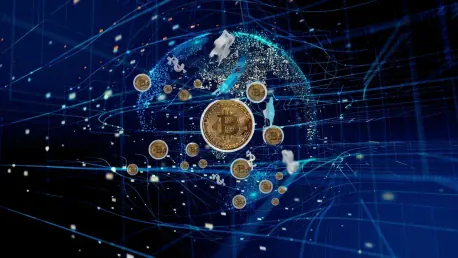The Pi Network, developed by Stanford graduates, aims to revolutionize mobile mining and democratize the cryptocurrency landscape through its user-centric security model. As the anticipation surrounding its Mainnet launch grows, speculation about its future valuation and adoption has garnered significant attention. This article delves into the various aspects of the Pi Network, including the concept of Pi IOUs, the Global Consensus Value (GCV), and potential real-world applications. Understanding these elements provides insights into how this innovative digital currency platform could shape the future of cryptocurrency.
The Build-Up to the Mainnet Launch
The Pi Network community, known as “Pioneers,” is eagerly awaiting the public Mainnet launch, set for November 30, 2024. This launch is a critical milestone, signaling the transition of the network from its beta phase to a fully operational state. The excitement surrounding this event has led to significant speculation about the future potential of Pi coins. Currently, Pi tokens are not operational or available on major exchanges, which has led to the emergence of Pi IOUs. These speculative assets allow for the trading of Pi coins on select exchanges, functioning like futures contracts. Users purchasing Pi IOUs essentially buy representations of Pi tokens with the expectation that these will be swapped for actual Pi tokens when the Mainnet goes live.
The anticipation of the Mainnet launch has generated a buzz within the cryptocurrency community. Pioneers and potential investors are closely watching the developments, hoping that the Pi Network’s transition will lead to increased valuation and broader adoption. As the deadline for completing the migration to the beta Mainnet approaches, the level of enthusiasm continues to rise. This sense of anticipation underscores the community’s belief in the network’s vision and potential. Despite uncertainties, the planned transition is seen as an opportunity to solidify Pi’s position in the competitive cryptocurrency market.
Understanding Pi IOUs and Their Role
In the absence of operational Pi tokens, Pi IOUs have become a popular trading option on exchanges such as CoinW, HTX, and BitMart. These IOUs serve as placeholders, allowing users to speculate on the future value of Pi coins. The trading of Pi IOUs has created a speculative environment, with users hoping to capitalize on the anticipated Mainnet launch. The concept of Pi IOUs highlights the community’s confidence in the future of the Pi Network. By trading these speculative assets, users are expressing their belief in the network’s potential and the eventual value of Pi coins. This speculative trading environment has contributed to the growing interest and momentum around the Pi Network.
The trading dynamics of Pi IOUs demonstrate the speculative nature of the cryptocurrency market. While the current lack of operational tokens presents a challenge, it has not deterred users from engaging in Pi-related trades. The existence of Pi IOUs also implies a speculative faith in the network’s eventual success. As Pi IOUs are traded, they reflect the market’s cautious optimism towards the future implementation of Pi tokens. The exchange of these IOUs before full Mainnet functionality serves as an indicator of market sentiment and the potential valuation trend once actual Pi tokens become available.
The Global Consensus Value (GCV) and Its Implications
One of the most intriguing aspects of the Pi Network is the notion of the Global Consensus Value (GCV). This concept proposes a valuation of USD 314,159 per Pi coin, incorporating the mathematical constant π into the valuation. While this figure may seem economically implausible, it reflects community-driven valuation elements such as perceived worth, engagement, and network growth. The robust and active user base of the Pi Network, which numbers in the millions, is seen as a significant strength. This large user base creates a positive feedback loop of demand, potentially driving up the value of Pi coins. The fixed supply of Pi coins, which will be established once the network transitions to the open Mainnet, could further bolster the GCV’s standing as a baseline value.
The mathematical infusion into Pi’s valuation model introduces a unique approach to cryptocurrency worth. While some analysts criticize the GCV for being overly optimistic, its conceptual basis in π connects deeply with the community’s vision. The effective use of GCV as a promotional figure has created widespread intrigue and discussion within the digital currency sector. Additionally, the fixed supply model echoes the principles seen in established cryptocurrencies like Bitcoin, hinting at potential similar value propensities. This intrinsic scarcity, alongside community engagement, could drive the speculative evaluation, pushing the GCV as an aspirational rather than an actual benchmark.
Potential Real-World Applications and Adoption
The broader adoption of Pi coins in commerce and their acceptance by institutional investors or listing on major exchanges could significantly influence their market traction and global recognition. The Pi Network aims to democratize digital currency transactions and mining processes, making them more accessible to the general populace. This accessibility could foster widespread adoption, as more individuals engage with the Pi Network for everyday transactions. Moreover, integration into existing financial systems and technology platforms could drive broader acceptance and utility of Pi coins.
Rumors of a potential collaboration with Elon Musk have also amplified interest in the Pi Network. Speculation suggests that Musk might release a Pi Phone that accepts Pi Network coins, aligning with his vision of decentralized technology. Although there is no official confirmation, such integration would enhance the accessibility and utility of Pi coins, driving further adoption and usage. These rumors, regardless of their accuracy, have sparked conversations about the potential real-world applications of Pi coins. The mere possibility of such a collaboration has brought additional attention to the Pi Network and its innovative approach to digital currency.
Community-Driven Development and Future Growth
The Pi Network, created by Stanford graduates, seeks to transform mobile mining and make the cryptocurrency environment more accessible through its user-friendly security approach. As buzz around its Mainnet launch intensifies, there is considerable speculation about its future value and potential widespread adoption. This article explores the Pi Network from various angles, including the concept of Pi IOUs, the Global Consensus Value (GCV), and their possible real-world uses. These elements illustrate how this groundbreaking digital currency platform might redefine the future of cryptocurrency.
Pi Network’s development is particularly notable because it aims to allow everyday users to mine cryptocurrency on their mobile devices effectively. This mobile-centric approach to crypto mining could democratize the process, making it accessible even to those without high-end mining rigs. By analyzing the Pi Network’s potential impacts and innovative features, one can gain a clearer picture of how this platform might influence the future of the crypto world, both in terms of technology and user engagement.









